Bon Odori 2014: Spirits and Youkai Together
by RadiumEyes, HSM team writer
The featured photograph, from Muza-chan.net, shows a taiko drummer performing at Tsukiji Hongwanji; the Obon (also known as the Bon Festival) features this iconic yagura stage, upon which the drummer stands as he plays.
Lili Florea, the website’s founder, also relates the tale of Mokuren, who founded the famous Bon dance; according to the tale, Mokuren (one of of the two foremost disciples to Gautama Buddha) had a vision of his mother in the “preta (hungry ghost) hell” and asked Buddha for advice. The Buddha suggested donations to monks, to be made on the 15th day of the 7th month (lunar calendar reckoning); with his mother now free from the realm, Mokuren danced, and thus, the Obon staple was born. In addition to that, Mokuren also spoke with the deceased to understand their suffering and help them get released from their woes (or come to terms with their condition); his life speaks of seeking salvation for others.
I preface this article with that tale, because the Bon Festival returns for Playstation Home.
With Irem Square now out of the picture, Granzella takes up the reins (as they did the previous year), offering the familiar yagura and the Bon dance one can participate in around the central tower; I discussed some of the details of the festival in my article for it last year, but Granzella went the extra mile to incorporate the youkai themselves into the proceedings. Seeing oni and kasa-obake (the umbrella ghosts) as NPCs whom users can interact with raise an important context when it comes to the “world of twilight” and the various spirits and creatures that inhabit it.
The youkai do not adhere to moral absolutes; they can be mischievous and malevolent beings, certainly, but they are not uniformly “evil” (as Western religions understand the term). Take the oni, for example – despite their fearsome appearance and overall destructive behavior, some can display good behavior and serve as guardians (such as monks becoming oni to protect temples). Oni typically appear with red or blue skin, and carry clubs; the blue oni have an intellectual, mysterious and reserved side to them, while their red counterparts are hot-blooded and typically emphasize physical strength over intellectual capacity (although this does not necessarily mean outright stupidity or great ignorance on their part).
This character dynamic even has a page on TV Tropes, “Red Oni Blue Oni,” which explains the personality differences and offers numerous examples throughout fiction; many works that fall into this trope focus on the personality (such as Ed and Al from Fullmetal Alchemist or Usagi and Rei from Sailor Moon), but some of the pairings do retain the youkai nature suggested by the title, with Inuyasha and his half-brother Sesshomaru being a great example.
The presence of these youkai as NPCs breaks down possible expectations people may have of them – after all, they inhabit the same world as humans (one of many in Buddhist cosmology), and representing them as exclusively “evil” would not do them justice. A more accurate assessment (to me, at any rate) would present them as the “bad” counterparts that one must be wary of when pursuing the Buddha’s teachings; with Buddhism and Shinto, practitioners of both religions emphasize the development of karma and the capability of humans of turning towards negativity.
Oni, kasa-obake, tengu and numerous other youkai present a complex interaction between man and nature, wherein spirits can (and will) prey upon people’s material desires, ignorance and unwillingness to change. In that respect, they are “cautionary figures” who remind humans that delving into negative emotions such as anger and hate will prevent them from achieving nirvana and breaking free from the fetters that bind them to the mortal realm; fighting them in the Operation Defend Edo game thus serves as a lesson in one’s moral fortitude through video game form.
At the same time, one can see in the Bon Festival NCPs several figures who wish to be peaceful and participate in the games, without causing havoc or harm while there; youkai can show respect for others, even though they can be quite fierce and violent in nature.
All this ties into the rich history of Japanese folklore, and the new Operation Defend Edo mission introduces the Konaki Elder, a withered humanoid being who latches onto you; this references the konaki-jiji (“old man crying”), a youkai who becomes heavier than a stone if you try to pick it up. The kamaitachi also makes an appearance – folklore presentations of this particular youkai vary from region to region, but common elements include the dust devils (which they ride upon) and their sharp, sickle-like nails, used for cutting.
As a fun little trivia note, the Super Sentai franchise includes numerous villainous beings based on youkai; the kamaitachi appears in Ninja Sentai Kakuranger as a weasel-like creature, echoing its folklore origins. I already mentioned the connections between Super Sentai and Granzella, what with the U-Men and the outlandishly fun villains they fight; here, the Bon Festival is grounded in Buddhism and Shinto, as the public space takes place at night, the time when youkai appear.
The aspect of tasogare (“twilight”) echoes across centuries; the Meiji period (according to Gerald Figal in Civilization and Monsters: Spirits of Modernity in Meiji Japan) marked a spark towards modernity, and an attempt to reevaluate folklore traditions, a time of rapid industrialization and questions of identity in a “modern” environment based a good portion upon Western technology.
I bring this up because Japanese folklore is rife with difficulties in establishing identity; this is literally presented in the case of shape-shifting creatures such as the kitsune, but it also applies to the ephemeral nature of our experiences. The twilight period of the day marks a time which one find it difficult to distinguish passers-by; the transition from day to night becomes one of confusion and fear, as one might not know if one has encountered a youkai.
Returning to the Bon Festival itself, the spirits of the deceased have their own transition to partake in – they must cross into the spirit world, with lanterns guiding their path. Bon becomes a time when one’s ancestors revisit household altars, so paying one’s respects to them is paramount; it’s a grand reminder of the mutability of the world around us, as the “veil” between us and the spirits can easily be penetrated, even if for a short duration. People visit graves and ancestral places (such as home towns) to clean them and offer respects to those who still watch over them from afar; bear that in mind when participating in the festivities. Not only do you get to play games, you exist in a liminal space where spirits, youkai and humans intermingle for one solemn ceremony celebrating one’s ancestors and the recently-departed. Everything here came together for this one moment, to remember those in our family tree, and pay reverence to those whom we recognize as members of our history.
So take some time to remember anyone in your family tree; they share this festival with you, and their spirits permeate the festivities. And remember Mokuren and his devotion to Buddha’s teachings; he would listen to spirits and their suffering, and find some means of solace or redemption.
Sources:
Japanese traditions, Bon Odori Dance: http://muza-chan.net/japan/index.php/blog/japanese-traditions-bon-odori-dance
Share
| Tweet |


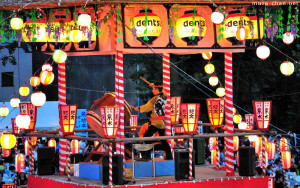
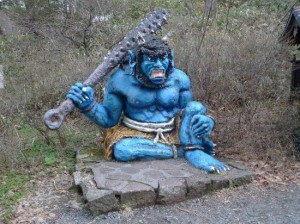
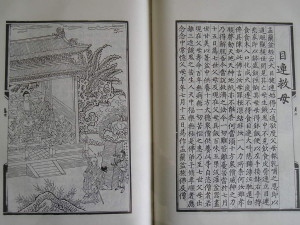
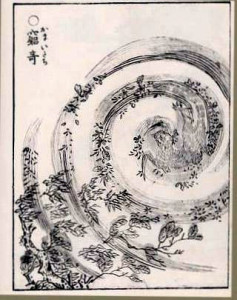
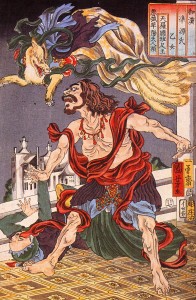
 Twitter
Twitter